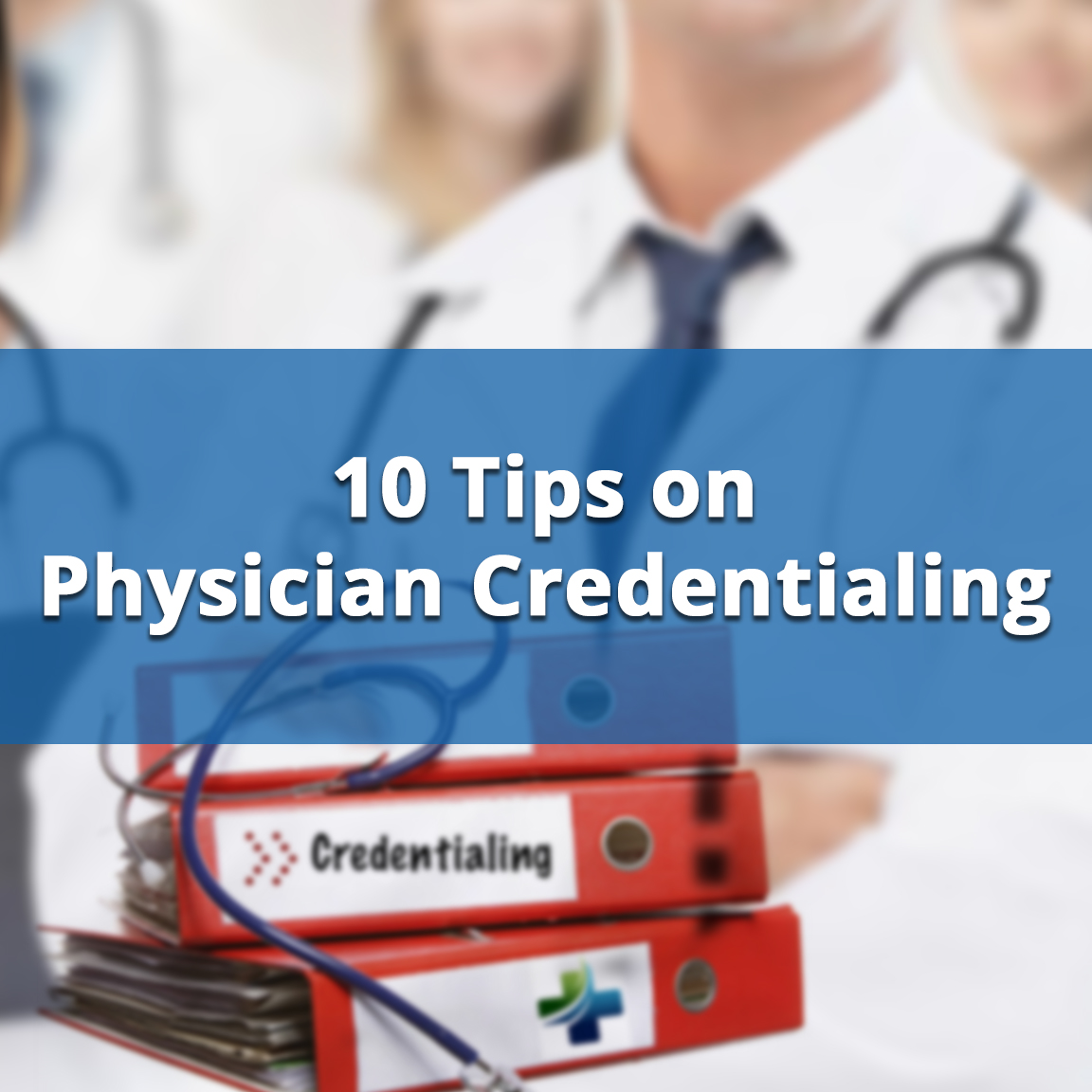Your credentialing process needs to start well in advance if you are planning to start your own practice or bring in new doctors to your existing practice. It is important to understand how credentialing can make a significant difference to the pace of your cash flows and how smooth your practice runs. Ignoring the credentialing process will result in delayed cash flows, difficult scheduling because of patient restrictions, and repeated phone calls to and from payers. Since problems with credentialing can be expensive while draining productivity, it is imperative to have a process in place and a plan for ensuring credentialing always remains up to date.
What is credentialing?
Credentialing is simply verifying facts – for example, physician credentialing involves verifying a physician’s medical school certificates and state licensure. It also involves employment verification and checking malpractice carriers associated with the physician. Credentialing will involve a background investigation on the provider’s criminal and financial history, and a check on the references. It’s a process that generally takes longer than you expect, so it’s important to start early.
Given below are ten tips that will help you with successful provider credentialing.
Assign a Credentialing Coordinator
You have a flourishing practice and cannot take out time to look into all aspects of the business. It makes sense to outsource your credentialing tasks to a professional agency which can take care of all your credentialing issues and make sure that everything is up to date. However, it also makes sense to assign a credentialing coordinator to ensure that deadlines are followed by sending out timely reminders when required.
Allow time for the Credentialing Process
Although the time taken for credentialing ‘should’ be around 90 days, you will be less stressed and better off if you give yourself about 150 days for the job. Each payer has their own credentialing timeline and your credentialing has to take place on their timelines.
Stay Updated
Payers are adopting the Coalition for Affordable Quality Healthcare (CAQH) uniform credentialing program and physicians who regularly update their information with the CAQH will have a more efficient credentialing and re-credentialing experience.
Link a new provider’s Start Date to the Submission of Credentialing Forms
A large number of practices request credentialing paperwork when they make an employment offer. Linking a new provider’s start date no fewer than 120 days after you receive his or her credentialing information will ensure that your credentialing is up to date.
Create a Sustainable Credentialing Process
Although challenging, creating a credentialing workflow helps over the long term. Even if you outsource the credentialing process, our workflow should maintain all required forms and documents. With a multi-physician practice, re-credentialing is always coming up, and a workflow to accommodate it benefits the practice greatly.
All payers do not allow billing a new physician as locum tenens
While you could bill for a new physician whose credentialing isn’t complete by designating them as locum tenens (basically a fill-in physician) with some payers, remember that not all payers let you do this. It’s important to get the physician fully credentialed so you can bill normally. However, in case you cannot; at least contact the payers to learn their policy on locum tenens billing.
Maintain Physician Contact Information
It is important that any change of address or phone numbers of your physicians is reflected immediately in your records. Ensure that your credentialing coordinator maintains complete, up-to-date contact information for every physician. The credentialing process involves multiple forms submission, and clear communication with the physicians is essential.
Make sure all Physicians are aware of what is Required
Along with the offer of employment, make it clear that you need their work and education history, certification and license information, and malpractice liability certification along with other bits of information. The physician should be aware of his or her responsibilities towards credentialing or re-credentialing.
Conduct your own Background Check
It makes sense to conduct your own background check on new physicians before making an employment offer. While it may seem like doubling the process, it can prevent you from hiring a physician only to run into problems with licensure later on.
Know your State’s Regulations
States differ in their laws and regulations and your state may have its own laws for physician credentialing. It may also have reciprocity agreements based on payer and other state credentialing organizations, thus allowing the payer to streamline credentialing for a physician credentialed with the payer in one state prior to moving to the new job.
How does MedConverge help you?
Credentialing and enrollment involve much more that just filling out forms. It is absolutely crucial to understand how important provider credentialing and enrollment is to the revenue stream of the organization and how it affects the accurate reimbursement for services rendered. Leave the headache and stress of provider credentialing and enrollment to us as you use that precious time to do what you do best – provide medical treatment to your patients.



